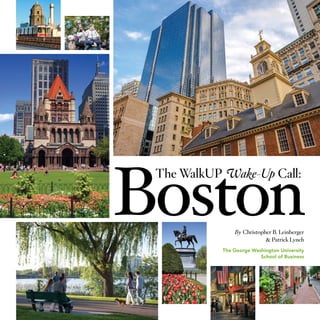This document analyzes land use patterns in the Boston metropolitan area. It finds that walkable urban places, which have higher density and allow residents to accomplish daily tasks on foot, are gaining popularity and economic value. These places have higher property values and generate more tax revenue per acre than car-dependent suburban locations. The growth of walkable urban areas benefits the regional economy but also risks reducing affordable housing if not properly managed. Public transit is key to supporting walkable urbanism, so investments that improve transit capacity and resilience are needed to accommodate future growth.




























